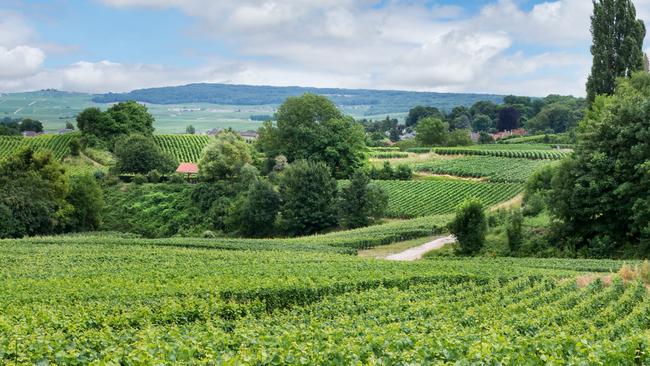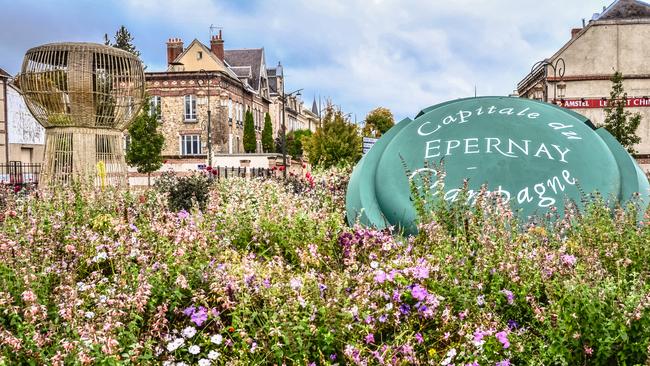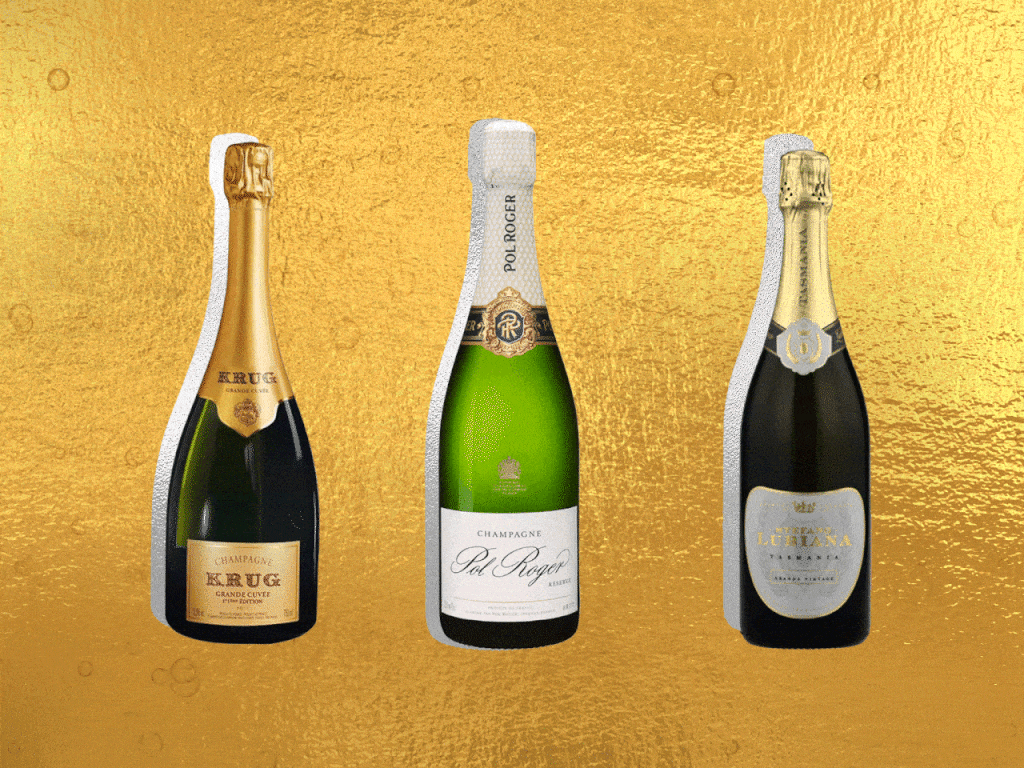How to see the home of your favourite champagne
From an underground labyrinth holding 25 million bottles to the best bargain wine tour you’ll find, venture deep into the cellars of some of France’s best-loved champagne houses.

The 17th-century monk Dom Perignon gets the credit for refining champagne’s production, but the bubbly we know and love today sparkles in flutes thanks to a formidable woman, Barbe-Nicole Ponsardin. Never heard of her? Try Veuve Clicquot (“widow Clicquot”). When her young husband died unexpectedly in 1805 she became the first woman to run a commercial champagne house, later inventing the riddling rack, an essential piece of kit that ensures sediment stays in the neck of the bottle. Her story is becoming better known, thanks to the biopic Widow Clicquot (available on Apple TV).
If its vineyard-filled scenes inspire you to visit the real deal, historic Reims and Epernay are full of champagne houses to tour, bars selling endless varieties of fizz, and restaurants that match each course with bubbly.
Between them lies a sea of vines in the Montagne de Reims, where independent producers sell top-quality champers from about $30 a bottle, a fraction of the cost of the big-name brands.
I can’t stay away from this delectable area of France; I’ve been visiting champagne houses for 25 years. There’s plenty to see, including a lighthouse surrounded by vines in Verzenay, a treetop champagne bar at Verzy, and Reims cathedral, where 25 kings of France were crowned. And let’s not forget the tombs of Dom Perignon and his fellow monk Dom Thierry Ruinart in the church at pretty Hautvillers.
You’ll probably want to see the home of your favourite champagne, but if you’re after those houses offering the most individual experiences, or a way to tour and taste on a budget, these are the best in the region.

The grande dame
Veuve Clicquot, Reims
Descend the staircase to the Veuve Clicquot cellars, 24km of dark, hushed corridors linking ancient chalk pits that feel like a cathedral to champagne. Barbe-Nicole would stroll through their entirety to get ideas, although visitors today see only a fraction of their length.
The tour is excellent. I’ve visited many champagne houses where they just trot out the fact that three main grape varieties are used in champagne (pinot noir, pinot meunier and chardonnay). Here you can sniff the differences with the aid of aromas puffed into the air. The riddling racks you’ll see everywhere in Champagne take on special significance as the guide explains how Barbe-Nicole developed the process of turning the bottles a fraction each day over an eight-week period.
As you ascend to ground level again, pay attention to the dates on the stairs, which mark vintage years in the house’s history; Barbe-Nicole is also credited with developing the first vintage champagne.
Stay: Conveniently close to Veuve Clicquot is the elegant
Domaine Les Crayeres, which has the feel of a Scottish manor, as well as a two-Michelin-starred restaurant and a cellar with 1000 types of champagne; rooms from about $800 a night.
Details: Various tours available from $58 a person.
Most impressive cellars
Domaine Vranken-Pommery, Reims
From Veuve Clicquot it’s a 10-minute walk to the impressive blue-turreted chateau with surrounding vines established by another famous champagne widow, Louise Pommery. She also played a role in developing the drier fizz we drink today, instructing her cellar master in 1874 to “make sure that it is subtle more than anything else”, creating Pommery Nature, the first champagne brut.

She carved her way into champagne history in another way, creating an 18km underground labyrinth of cellars linking Gallo-Roman chalk pits where she commissioned enormous chalk reliefs to decorate them. If the visions of Bacchus and his cohorts make your eyes pop, consider that these impressive cellars hold a drool-inducing 25 million bottles.
To complete the picture, modern art installations are dotted around the chalk pits. Vranken-Pommery likes to keep up with the times and aims its quarter bottles of Pommery Pop, in pink, gold and blue, at a younger crowd. Add a dinner accompanied by champagne, or take a look round the adjacent Art Nouveau Villa Demoiselle, which has been painstakingly restored.
Stay: If you’re on a prosecco budget, try the modern
Campanile Reims Centre; rooms from about $122 a night.
reims-centre-cathedrale.campanile.com
Details: Tour and tasting from about $78 a person.

Most fun experience
Champagne Mercier, Epernay
Once dubbed the Faubourg de la Folie (“suburb of folly”), Epernay’s Avenue de Champagne is now a UNESCO World Heritage centre because of the who’s who of champagne houses lining the 800m strip. You could pop into Moet & Chandon, with 27km of cellars, for a classic cellar tour. But for something a little different try Mercier. Its more modern exterior belies the unusual experience within, where an underground train runs through its 17km of galleries. Before heading underground marvel at Eugene Mercier’s propensity for publicity as you circumnavigate the enormous oak barrel that took 24 oxen to pull to the 1889 International Exposition in Paris. The cellars aren’t bland either. As you chug through them in something akin to a theme-park carriage you’ll see bas-reliefs lining the route (spot the scantily clad statue of Miss Mercier holding a glass, which caused a scandal at the time). For more fun visit Mercier’s former headquarters, in the turreted 19th-century chateau on Avenue de Champagne that is now run by the Comtesse Lafond champagne house. Here you can try sabrage, cutting off the tip of a champagne bottle with a sword.
Stay: Les Suites du 33 at Champagne de Venoge, which has four contemporary suites as well as tastings with tapas in its stables bar; from about $486 a night.
champagnedevenoge.com
Details: Tours and tastings at Mercier from $35 a person. Sabrage and tastings at Comtesse Lafond from $100.
Best bargain tour
Champagne Henri Goutorbe, Ay
With its half-timbered houses and 15th-century church, the grand cru village of Ay is known for being the birthplace of French glass designer Rene Lalique as well as the home of Champagne Bollinger, where tours and tastings cost about $255 a person. Head instead to Champagne Henri Goutorbe, with an excellent tour for less than $20. The Goutorbe family has been running the champagne house since the 1940s, and it displays the 70-year-old press that was once used. In the cellars is more modern equipment, as well as walls lined with bottles.
Stay: Just over the road, the family runs the Hotel Castel Jeanson in a grand 19th-century building with a pool; rooms from about $214. A five-minute walk up the road is Pressoria, an interactive museum in which visitors use all their senses to learn about the champagne-making process.
THE TIMES
If you love to travel, sign up to our free weekly Travel + Luxury newsletter here.




